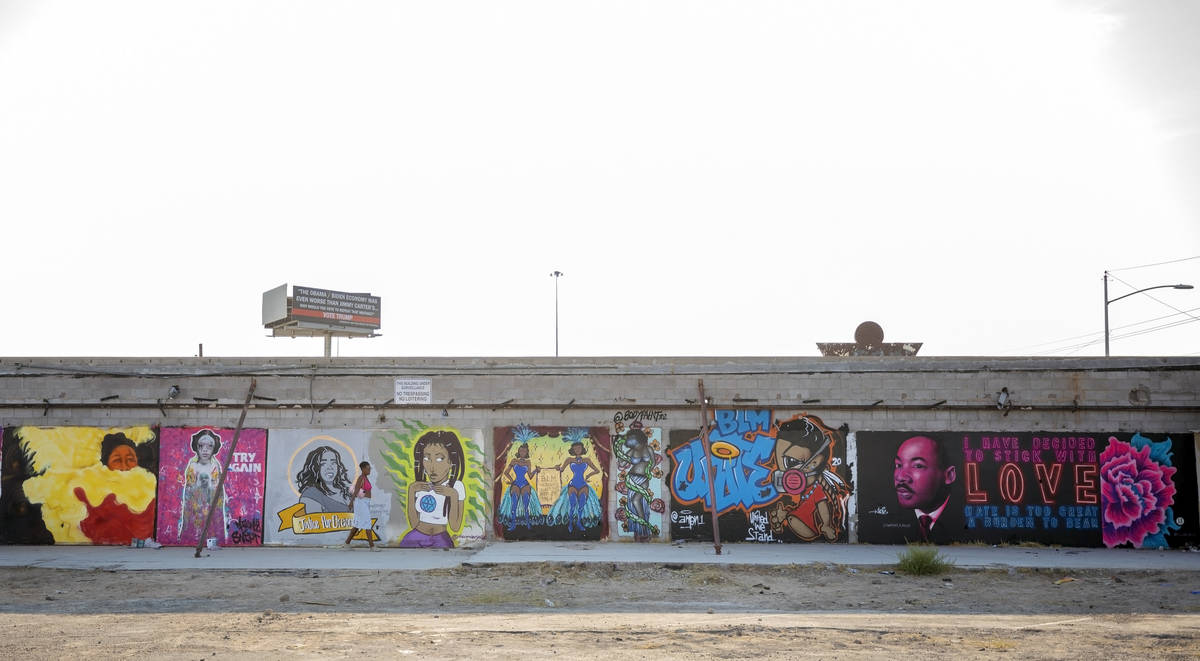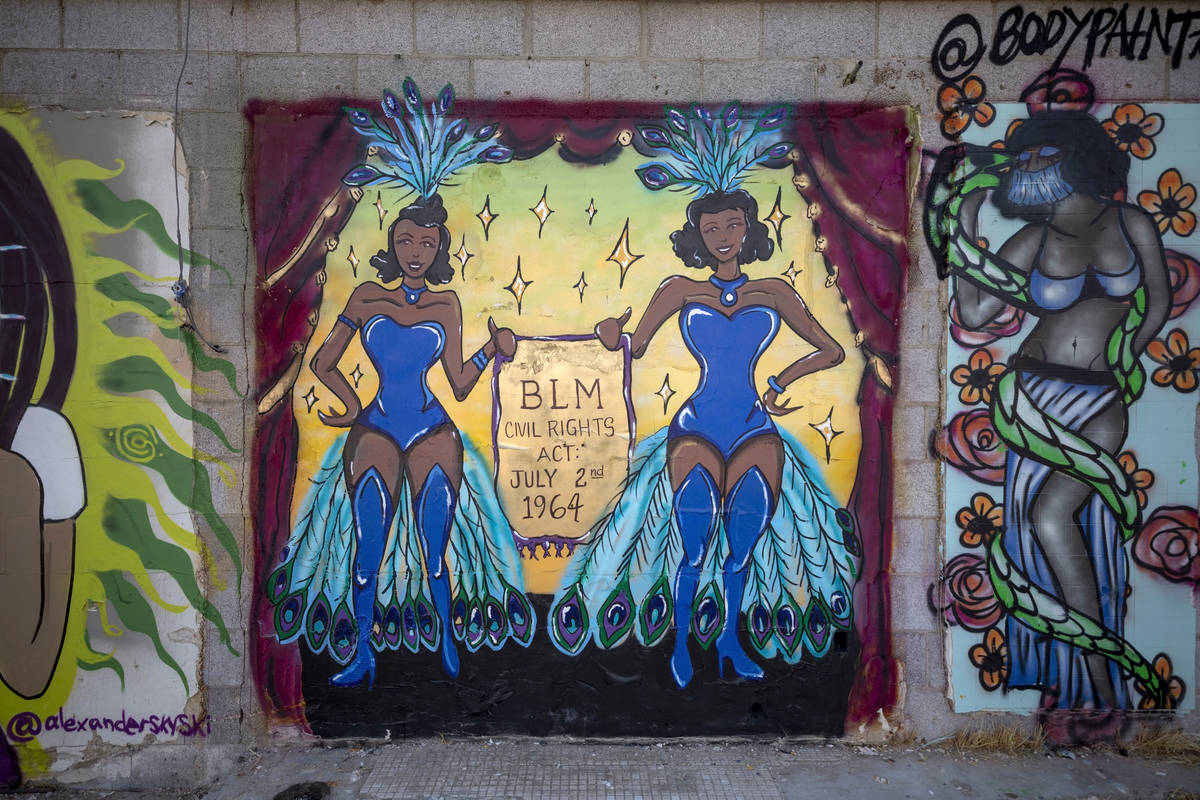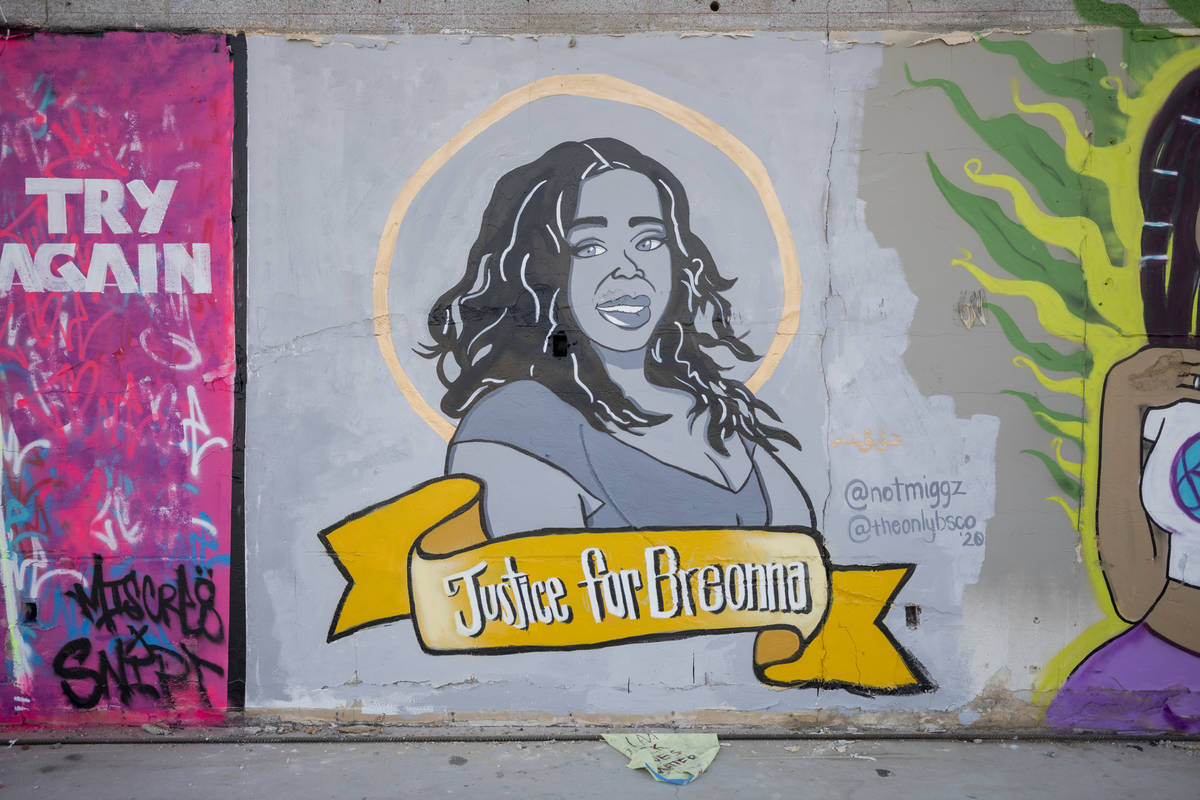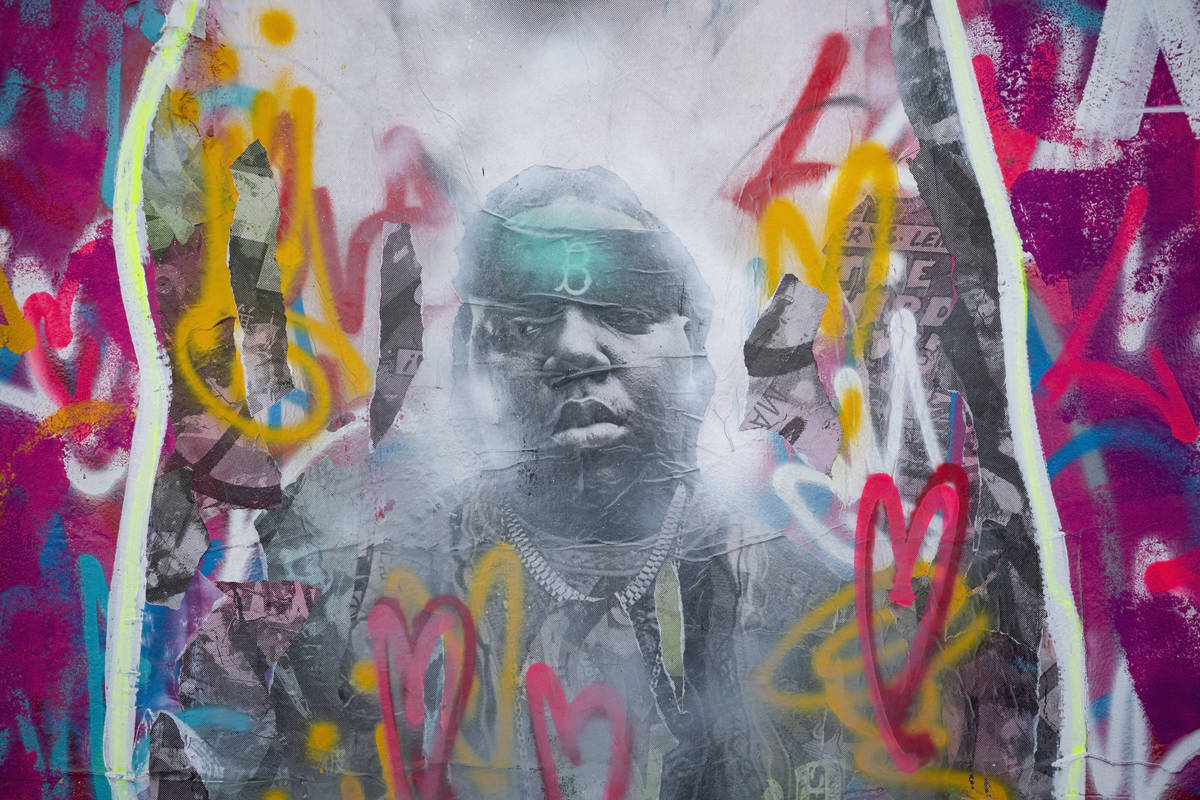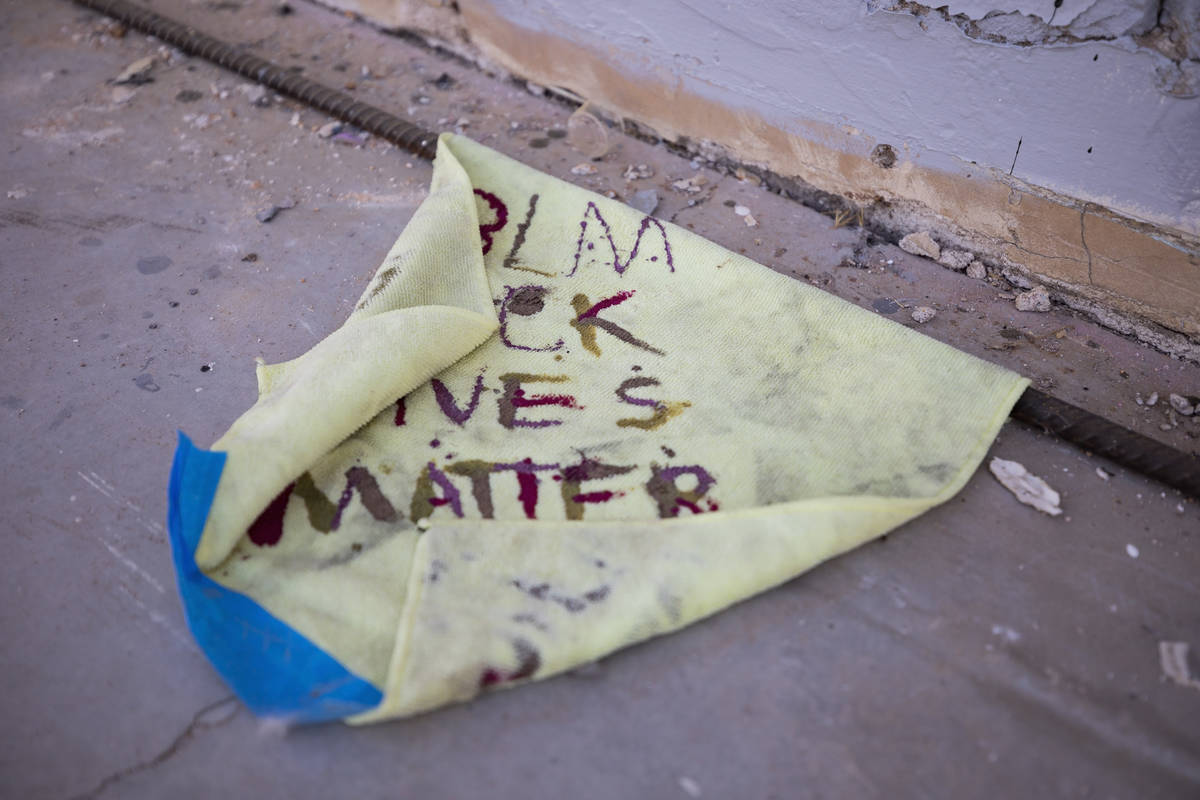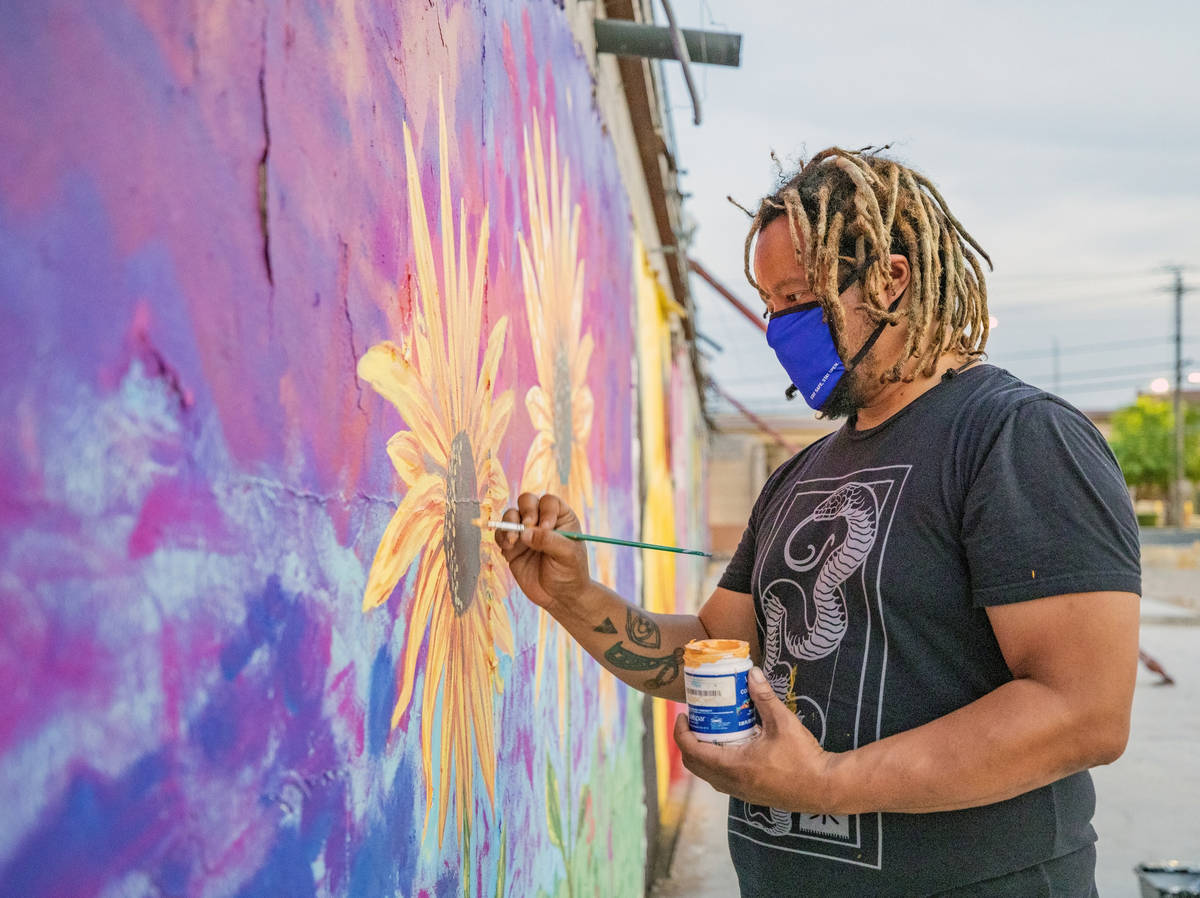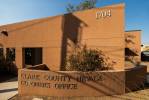Artists, activists are beautifying Moulin Rouge lot with murals
In 1955, the Moulin Rouge became the first racially integrated casino in the country.
The property was popular with Black entertainers who could perform in but not stay at other casinos, it was owned by the first African American woman to hold a Nevada gaming license, and it stood as a source of pride for the Historic Westside community.
It closed just six months after it opened, fell victim to squatters and fires over time and was demolished in 2017.
Now, a group of artists and activists is using trash bags and paintbrushes to argue that the lot should be built into a source of pride, once again.
Teresa Brooks launched a local chapter of her Sierra Leone-based activist group, Africa Movement, following the death of George Floyd and the subsequent public outcry.
Brooks organized volunteers to clean up the lot of the former Moulin Rouge in a bid to open a dialogue about how the neglected property could better be used if the city were to intervene.
“We’ve been cleaning the area for two or three months,” Brooks says. “All the plastic and garbage gets hauled out. There’s a lot we can do on that lot if it were like a park. COVID testing. Outside tutoring classes. Our weather will be its best in a month, and there’s stuff we can do.”
In the mid-August heat, when it was still over 100 degrees after the dusk, Brooks, 40, and 24-year-old Sierra McDaniel prowled the lot, collecting plastic bags, glass bottles, recyclables and human waste.
“We’re taking out all the debris that’s been littered here to make a clean land,” McDaniel says. “The goal right here is we want to have a safe haven for everybody. To make sure the people of Las Vegas are taken care of. To express themselves, be free, be empowered.”
Brooks says that after Floyd’s death, she felt that the Black community in Las Vegas didn’t have a space to gather, a problem amplified because of closures related to the COVID-19 pandemic.
“During the civil rights movement, we (were) kicked out of all of Las Vegas and basically isolated to this area,” says Brooks, gesturing to where the Moulin Rouge used to stand. “Now we’re going through Black Lives Matter, which is our new movement. And we’re basically being pushed from the Strip for protesting and Fremont Street for protesting. We have no safe haven.”
Beautification with art
When Las Vegas artist Brent Holmes caught wind of the efforts Brooks was starting, he offered his talents.
“I went down there and talked to Teresa,” Holmes says. “She said it would be amazing if we had murals on the lot. It’s an important historical site. We need to bring attention to it and beautify it.”
Holmes put out a call on social media for artists to paint murals on the building adjacent to the lot. The only restriction was that the murals needed to have empowering messaging for people of color or messaging that supported Black Lives Matter.
Local artist Jerry Misko helped to gain permission to use the land and painted a neon-inspired marquee.
Over four days, artists volunteered their time, talents and materials to paint colorful murals, some depicting Martin Luther King Jr., Breonna Taylor and showgirls holding up the Civil Rights Act of 1964.
“I prefer to think about this as opening up a dialogue with the people who own the property and with the city about how spaces are used,” Holmes says. “This city is full of open lots. This is maybe the most historically important. We can make this a better city for art. We don’t need the focus to be all on the Arts District.”
Holmes says that while he and other artists painted, families from the neighboring apartments would stop by to watch and offer thanks for the inspiring artwork.
“If the city proposed a park or community center, this could be somewhere those kids could play and learn culture and art and talk about Black history,” says Holmes.
Future of Moulin Rouge lot
The Moulin Rouge property is overseen by Kevin Hanchett, a court-appointed receiver who is negotiating the sale of the property on behalf of its more than 300 owners.
“Over 300 individuals lent the previous owner $19 million. Our job is to recover the money they invested in the property,” Hanchett says. “Donating it as a park does not accomplish that goal.”
Hanchett says that in early 2020, a developer proposed using the lot to open a mixed-use project with a big-box store. Those talks ceased in light of COVID-19. Another potential plan is to develop a casino on the property.
“To me, the Moulin Rouge is a moment,” Holmes says. “This is where Black folks crossed the color barrier for the first time. The Moulin Rouge had a really short shelf life. But the Moulin Rouge Agreement changed the entire city. It desegregated casinos city-wide. The physical building no longer exists, but there is something hallowed about the space.”
Contact Janna Karel at jkarel@reviewjournal.com. Follow @jannainprogress on Twitter.



